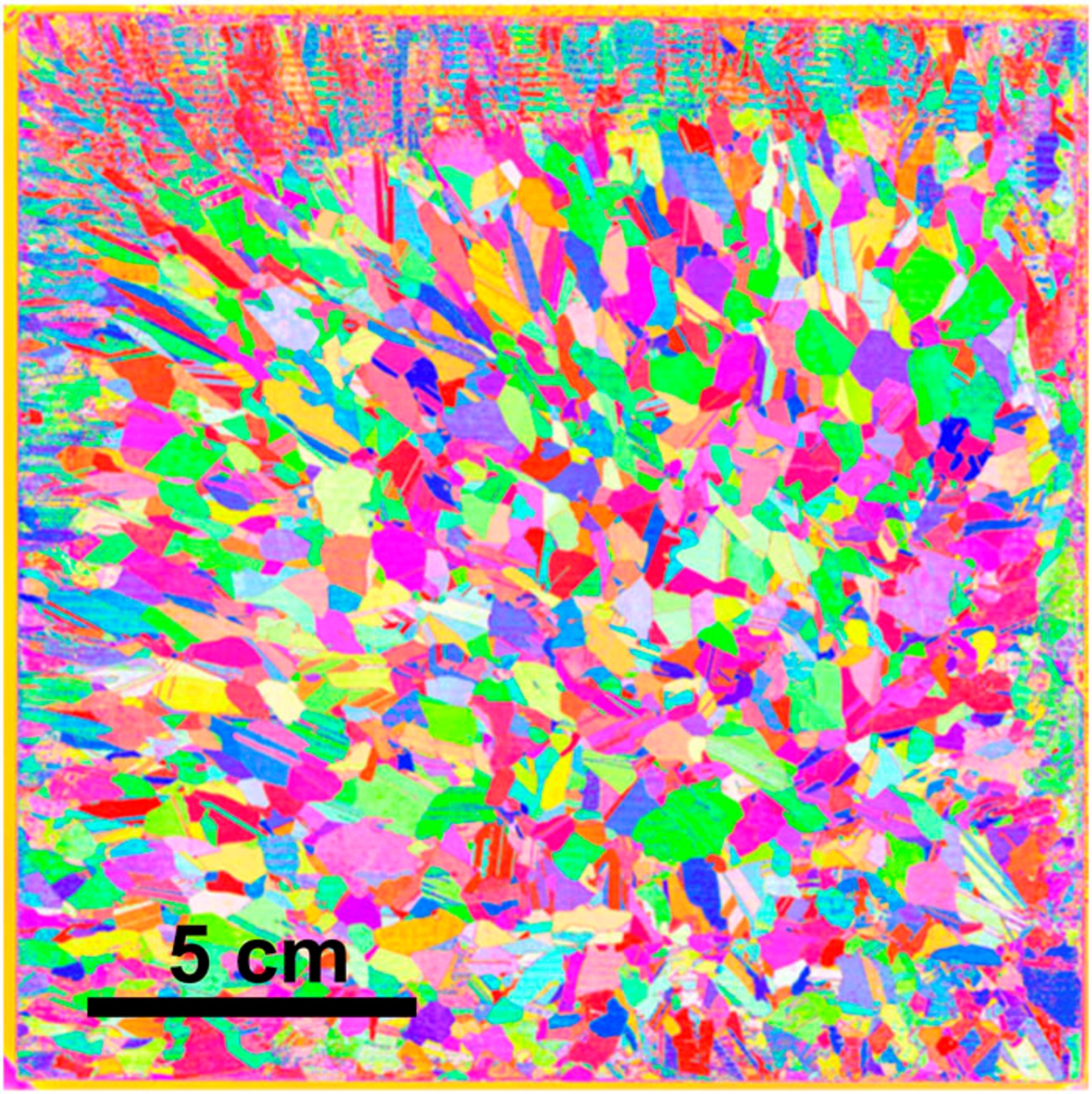| Oct 10, 2023 |
AI-based technique for predicting crystal orientation improves the efficiency of manufacturing most electronic devices
(Nanowerk News) A team led by Nagoya University researchers in Japan has successfully predicted crystal orientation by teaching an artificial intelligence (AI) using optical photographs of polycrystalline materials.
|
|
The results were published in APL Machine Learning ("A machine learning-based prediction of crystal orientations for multicrystalline materials").
|
 |
| An example of the crystal grain orientations predicted by the AI-based technique. The color represents the orientation of the grain. (Image: Dr Takuto Kojima)
|
|
Crystals are a vital component of many machines. Familiar materials used in industry contain polycrystalline components, including metal alloys, ceramics, and semiconductors. As polycrystals are made up of many crystals, they have a complex microstructure, and their properties vary greatly depending on how the crystal grains are orientated. This is especially important for the silicon crystals used in solar cells, smartphones, and computers.
|
|
“To obtain a polycrystalline material that can be used effectively in industry, control and measurement of grain orientation distribution is required,” Professor Noritaka Usami said. “However, this is hindered by the expensive equipment and time current techniques needed to measure large-area samples.”
|
|
A Nagoya University team consisting of Professor Usami (he, him) from the Graduate School of Engineering and Professor Hiroaki Kudo (he, him) from the Graduate School of Informatics, in collaboration with RIKEN, have applied a machine learning model that assesses photographs taken by illuminating the surface of a polycrystalline silicon material from various directions. They found that the AI successfully predicted the grain orientation distribution.
|
|
“The time required for this measurement was about 1.5 hours for taking optical photographs, training the machine learning model, and predicting the orientation, which is much faster than conventional techniques, which take about 14 hours,” Usami said. “It also enables measurement of large-area materials that were impossible with conventional methods.”
|
|
Usami has high hopes for the use of the team’s technique in industry. “This is a technology that will revolutionize materials development,” Usami said. “This research is intended for all researchers and engineers who develop polycrystalline materials. It would be possible to manufacture an orientation analysis system of polycrystalline materials that packages an image data collection and a crystal orientation prediction model based on machine learning. We expect that many companies dealing with polycrystalline materials would install such equipment.”
|
|
|

